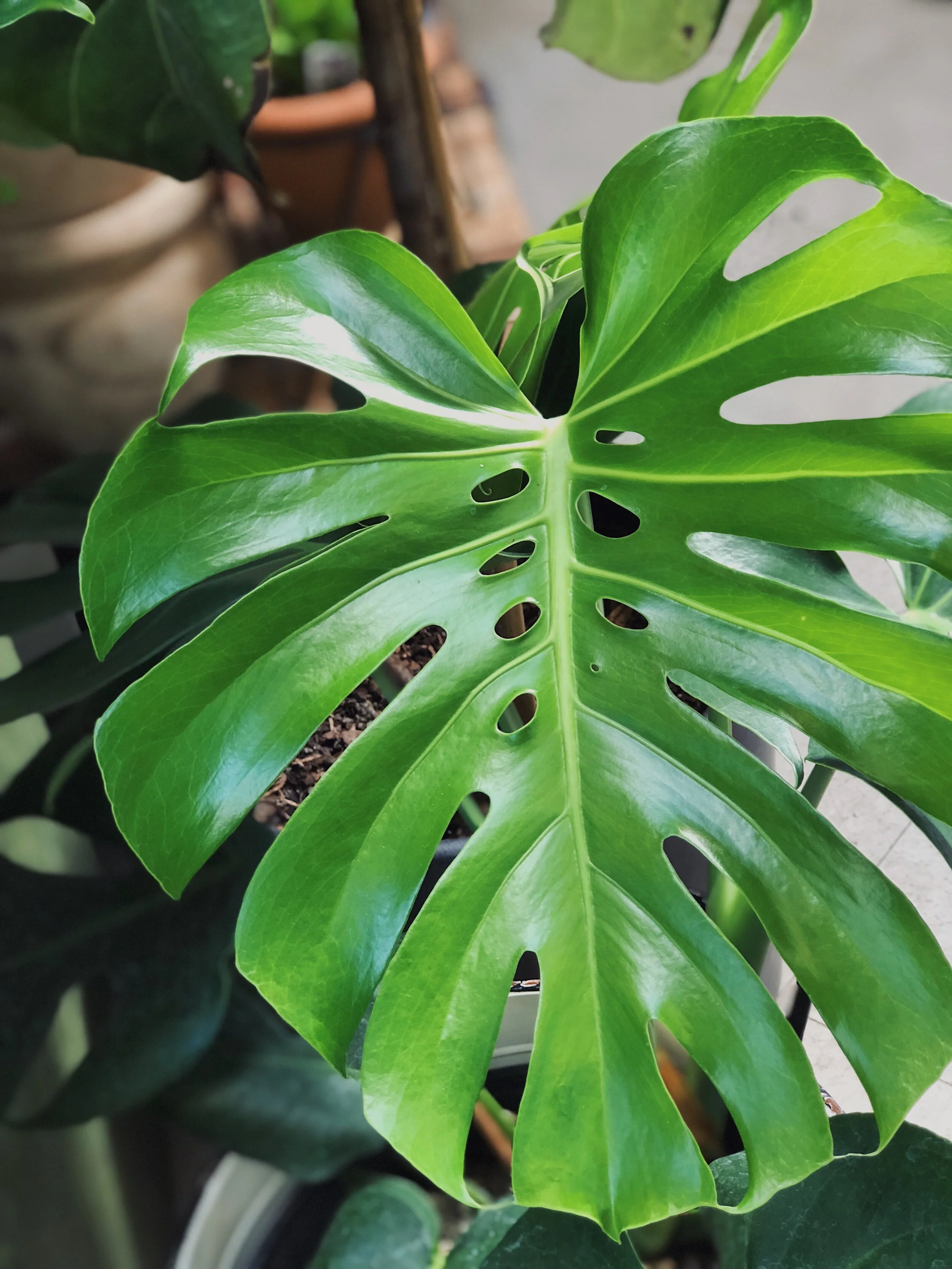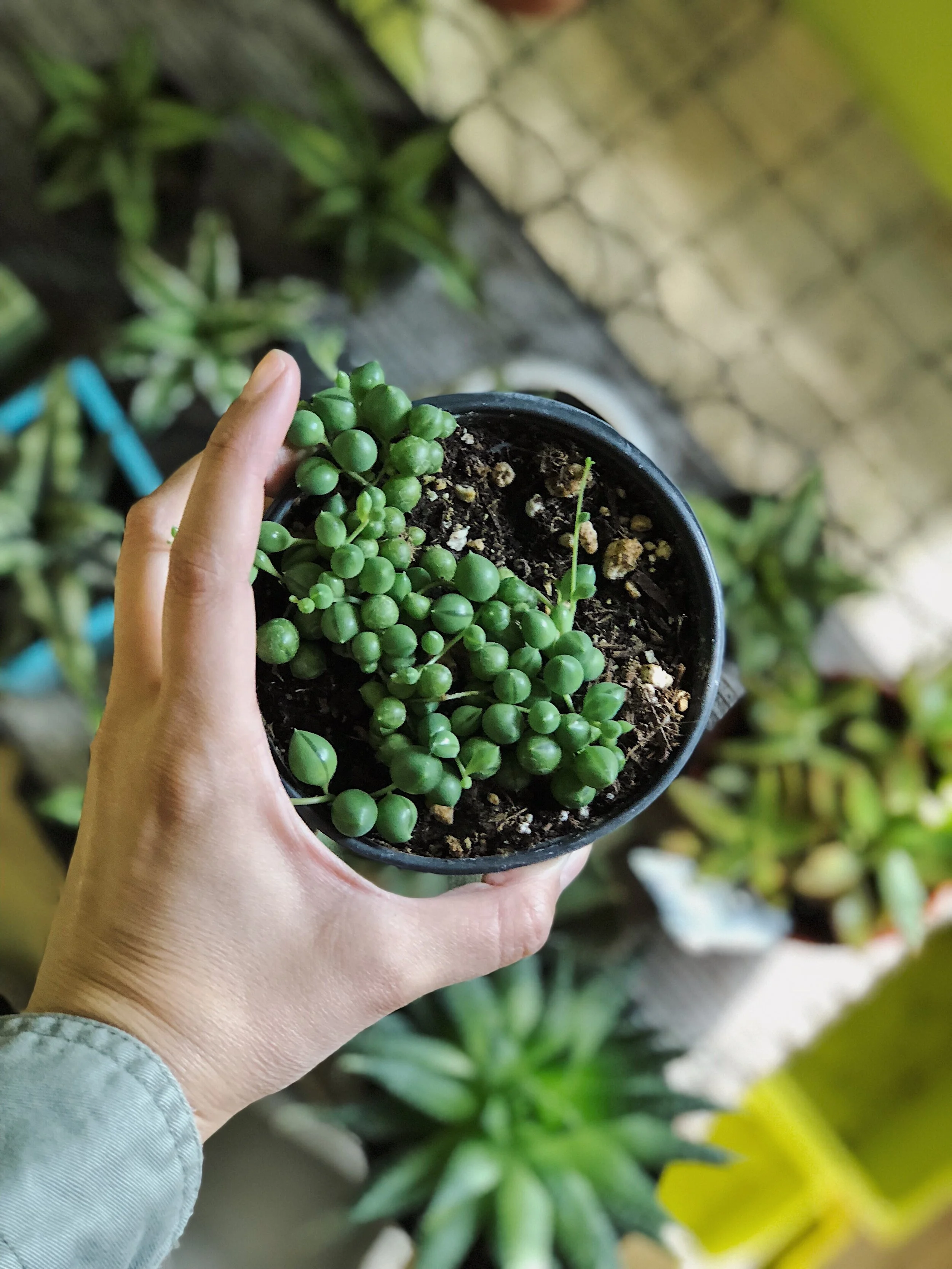top 5 trendy houseplants
Well, 2020 has been interesting to say the least (insert bummed out/stressed out Bri here). With everyone staying at home more often, there has been a major surge in houseplant popularity, particularly amongst millennials *raises hand, blushes, and pretends to cough as a distraction*. Since I have a lot of new plant parent friends and followers that are curious about getting into houseplant collecting I figured now would be a time to talk about some of the more popular houseplants. Here are 2020’s top 5 trendy houseplants.
Swiss Cheese Plant Monstera Deliciosa
Young Monstera leaf unfurling.
Photo by ohthegreenery.
Mature Monstera Leaf.
Photo by @ohthegreenery
Known for her heart shaped, split leaves, Monsteras have easily become one of the most recognizable and iconic plants in the houseplant collecting world. In their natural habitat, they grow by climbing up trees to get closer to the sun. As long as they're supported and well-maintained, they can grow several feet tall and their leaves can get up to 5 feet across! If you ever buy a baby monstera, you’ll notice their leaves don’t have any splits in them. These splits are actually a sign of the plant’s age and don’t show up until the new leaves are roughly 5-10 inches across. As they mature, they develop holes above the splits, which leads to their Swiss cheese plant nickname. These jungle plants do surprisingly well indoors, love (and I mean LOVE) the sun, and enjoy well draining yet moist soil. My large monstera is a favorite in my personal collection!
Fiddle Leaf Fig Tree Ficus lyrata
photo by: @ohthegreenery
I know you’ve seen these. They are literally everywhere - I repeat - EVERYWHERE. Open Architectural Digest, look into any waiting room or design agency, go to a fancy boutique or trendy friend’s apartment- if you didn’t see them before, you’ll start seeing them- everywhere! Their name comes from their fiddle shaped leaves. Aesthetically, I get it; they’re unique, bold and remind me of a tree from a Dr. Seuss book (which is never a bad thing). What I don’t understand is how everyone seems to have one when they can be one of the most challenging plants to own, especially here in the Pacific Northwest. They come from West Africa and are used to draught and heat so DON’T overwater them and DON’T let them sit in moist soil. Fiddle Leaf's are SENSITIVE to movement and may take years to start developing new leaves or even grow. They drop leaves when they aren’t happy and every time one of my fiddle leaf’s leaves drops, a tiny fiddle begins to play in my head. You can get them in a variety of sizes to start and they can grow to over 6 feet tall! They just take their time and thrive when they are in their ideal condition. Being one of the more temperamental members of the ficus family, getting one of these in your homes is like bringing home a boring puppy. Super cute yet high maintenance.
Rubber Leaf Tree Ficus Elastica
photo by: @ohthegreenery
These are starting to trend quicker than you can say print on pants. Seriously these leaves are on everything from fabrics, phone cases, and fine art prints. Originally from Southeast Asia and India, these plants are known for their unique color variations. Some look as if the colors were painted onto their oval leaves with a brush! These plants can give your home a tropical - without trying too hard - feel. They are pretty low maintenance and it is recommended to start with a small/young one so it acclimates at a young age to being indoors. I’ve seen these plants in waiting rooms bunched up in a pot standing 3-4 feet and I’ve seen them at tropical resorts get 60 feet tall. Don’t fret if you don’t see new leaves growing when you bring them home during fall or winter, the grow best during the warmer months. These popular iconic plants are definitely one of the easier of the ficus family members to bring into your home.
String of Pearls need scientific name
String of Pearsl
Photo by @ohthegreenery
String of Pears in mini hanging pot
Photo by @philos_and_ferns
I get excited when plants look alien, as if they came from a different planet entirely. The string of pearls is an eye-opener for plant enthusiasts and non plant lovers alike. The string of pearls is a part of the succulent family, which means it stores water in it’s leaves. They are beautiful hanging in a kitchen or decorating a succulent arrangement but, to be quite honest, they are so temperamental. The name of this succulent suits it, not only because of how it looks, but because it acts as high maintenance as the lady wearing pearls! You can’t overwater them, you can’t underwater them, you can’t give them too much light, but you can’t leave them in low light either. These plants have personally caused me so much frustration but the satisfaction when I keep a string of pearls alive for longer than a few months is that of conquering a mountain.
Prayer Plant need scientific name
Photo by @ohthegreenery
Known for more than the unusual patterns on their leaves, these unique plants are gaining momentum in the indoor plant world for their design aesthetic and remarkable attributes. They’re most notable quality is their namesake- as the sun sets and rises, they lift their leaves up and down as if they were lifting their hands together for prayer. I blame time-lapse videos of these on social media for their rise in popularity (seriously, it is so cool to watch these leaves pray!) One of my personal favorite qualities of the prayer plant is when new leaves grow, they look like rolled pieces of paper until they open up. They come in a variety of colors and aren't difficult to grow and maintain. They prefer warm environments but do not do well near a window receiving direct sunlight, as they can get sunburnt and can turn yellow if they aren’t given the right amount of indirect light and water.
What do you think of the top 5 trending plants of 2018? Let me know in the comments if you have any of these plants or are thinking about getting one!









